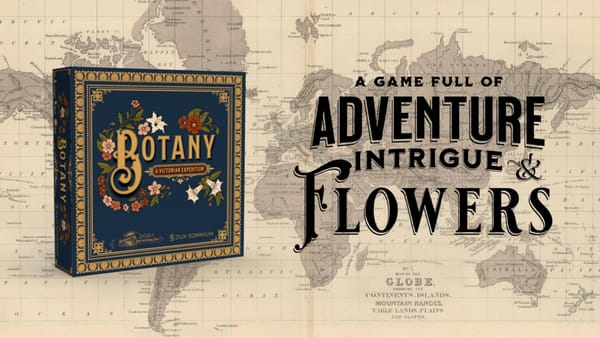Crowdfunding for Tabletop RPGs: How to Launch a Successful Campaign

Crowdfunding has become an essential part of the tabletop RPG (TTRPG) landscape, providing creators with the opportunity to bring their game ideas to life, raise funds for production, and engage with a passionate community of backers. Whether you're an experienced designer or a newcomer, launching a successful crowdfunding campaign can be a rewarding way to get your TTRPG project off the ground.
1. Preparing Your Project: The Foundation of Your Campaign
Before you even think about launching a crowdfunding campaign, you need to make sure your project is ready. This means having a solid game concept, a plan for production, and the right materials to attract potential backers.
Example: The Success of "Mörk Borg"
Mörk Borg, an OSR (Old School Renaissance) RPG, launched a wildly successful Kickstarter campaign, raising over $400,000—far beyond its initial goal. Its creators had an extensively playtested ruleset, a visually striking design, and a clear production plan before launch, which contributed to its massive appeal.
Key Steps to Prepare Your Campaign:
- Finalize Your Game Concept: Ensure that your TTRPG is well-developed, with clear rules, mechanics, and sample adventures.
- Create a Playable Demo: Offer a free, downloadable version or actual play videos to help backers experience the game firsthand.
- Set Realistic Funding Goals: Base your goal on actual production, shipping, and marketing costs while keeping it achievable.
- Prepare Your Campaign Materials: A compelling Kickstarter page, high-quality images, engaging video trailers, and playtester testimonials are crucial.
2. Building Your Community Before You Launch
A strong and engaged community before launch can give you the momentum needed to reach your funding goal quickly.
Case Study: "Candela Obscura" by Critical Role
Before launching Candela Obscura, the creators behind Critical Role leveraged their massive pre-existing fanbase. They built anticipation through social media, livestreams, and exclusive behind-the-scenes content, resulting in an instant funding success upon launch.
Community-Building Strategies:
- Start Early: Engage with potential backers months before launch through forums, social media, and blog updates.
- Create a Mailing List: Use platforms like Mailchimp to send updates and build a core audience.
- Join TTRPG Communities: Reddit, Discord, and Facebook groups can help spread awareness organically.
- Collaborate with Influencers: Partner with TTRPG influencers who can introduce your game to thousands of potential backers.
3. Launching Your Campaign: Making a Strong First Impression
The first 48 hours of your campaign are crucial for building momentum.
Example: "Avatar Legends RPG" – The Power of a Strong Launch
Magpie Games' Avatar Legends RPG raised $9.5M, making it the most-funded tabletop RPG Kickstarter ever. This was achieved through pre-launch hype, engaging early bird rewards, and immediate interaction with backers.
Best Practices for Launching Your Campaign:
- Promote Your Launch in Advance: Schedule social media and email campaigns before the official launch.
- Offer Early Bird Rewards: Provide limited-time discounts or exclusive items to encourage early pledges.
- Engage with Backers Immediately: Respond to comments, answer questions, and express gratitude.
- Leverage Social Proof: Highlight community excitement and testimonials to attract more backers.
4. Stretch Goals: How to Keep Backers Engaged
Once you hit your funding goal, stretch goals can keep excitement high and encourage additional pledges.
Case Study: "The One Ring RPG" and Stretch Goals
Free League Publishing’s The One Ring RPG reboot raised $2M+, partly due to smartly planned stretch goals, including new campaign settings, upgraded components, and exclusive adventures.
How to Use Stretch Goals Effectively:
- Offer Meaningful Rewards: Additional content, upgraded materials, and new character options are great incentives.
- Keep Backers Updated: Post frequent updates on progress toward stretch goals.
- Incorporate Backer Feedback: Let backers vote on additional content they’d like to see.
5. Fulfilling Your Promise: Delivering a Quality Product
After the campaign ends, delivering on your promises is crucial for maintaining credibility.
Example: "Fate Core" – A Gold Standard in Fulfillment
The Fate Core Kickstarter by Evil Hat Productions exceeded expectations in communication and delivery, ensuring a smooth experience for backers. They regularly updated supporters and provided accurate fulfillment timelines.
Best Practices for Fulfillment:
- Communicate Clearly: Regular updates on production and shipping are essential.
- Invest in High-Quality Production: Work with reliable manufacturers and fulfillment partners.
- Show Appreciation: Thank backers with bonus content or exclusive credits in the final product.
Conclusion
Crowdfunding for a tabletop RPG is an exciting but demanding process. By following the right strategies—preparing thoroughly, building a community, launching effectively, and maintaining engagement—you can create a successful campaign that not only funds your game but builds a passionate player base for years to come.
With the right approach, your TTRPG project can be the next big success story on Kickstarter.
Happy crowdfunding!





